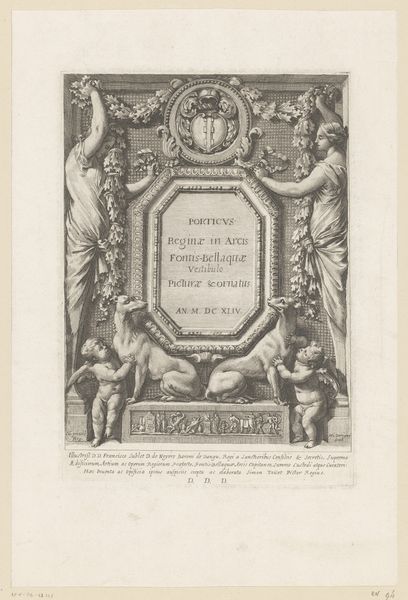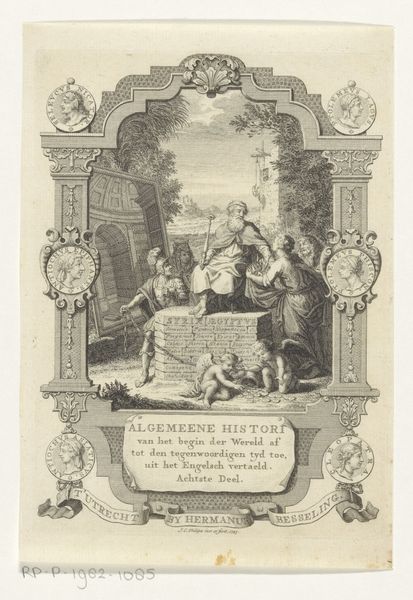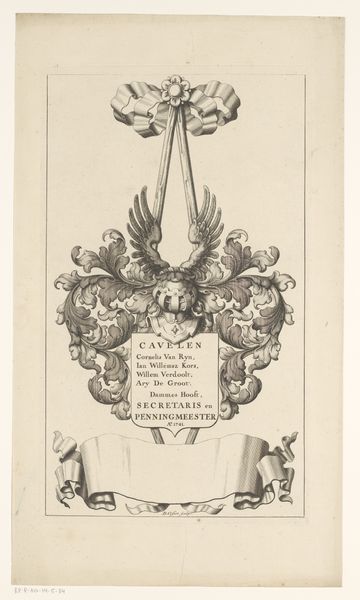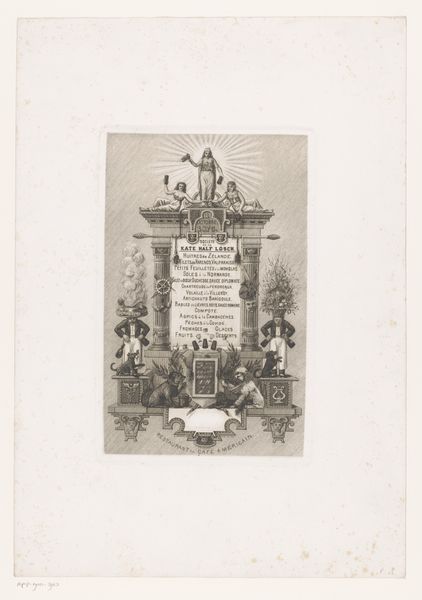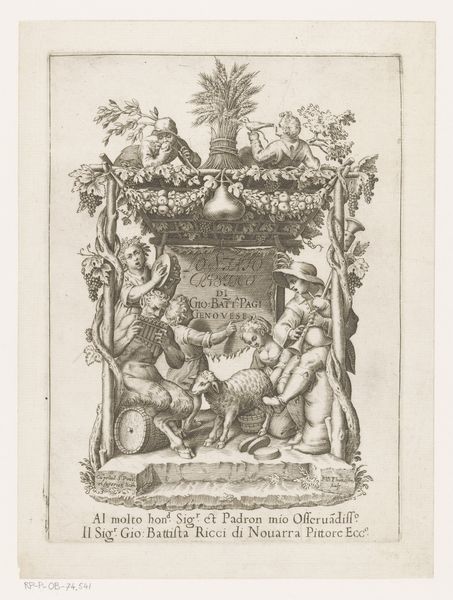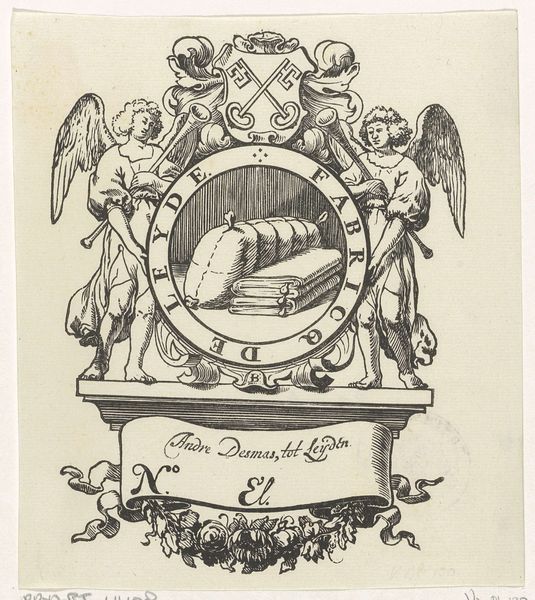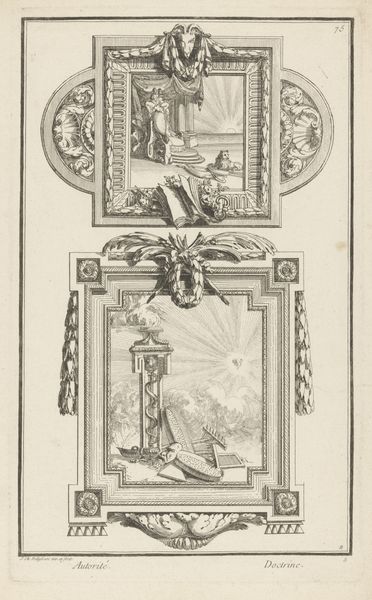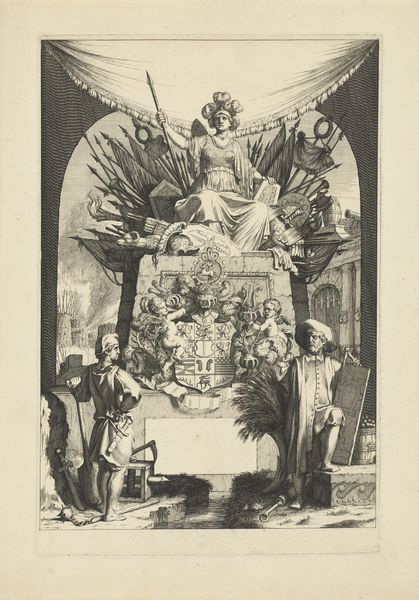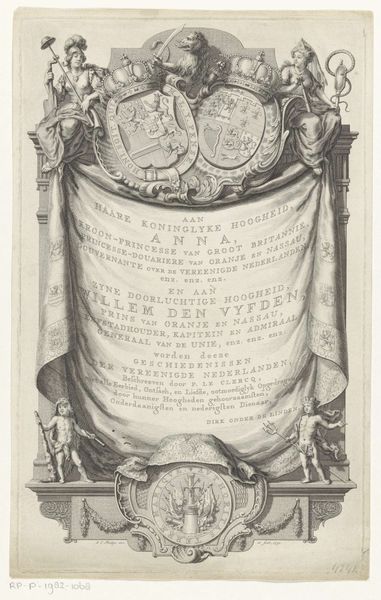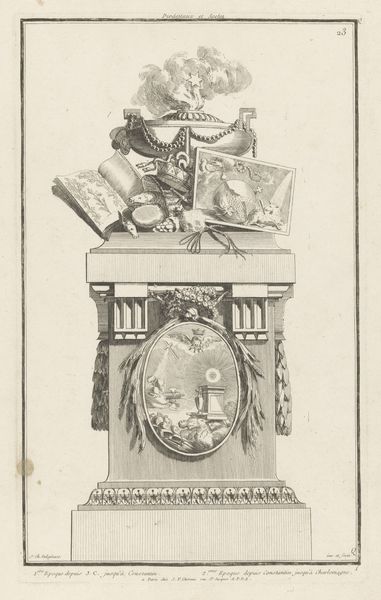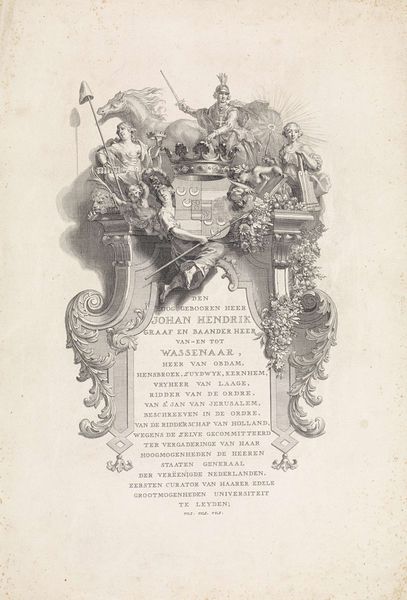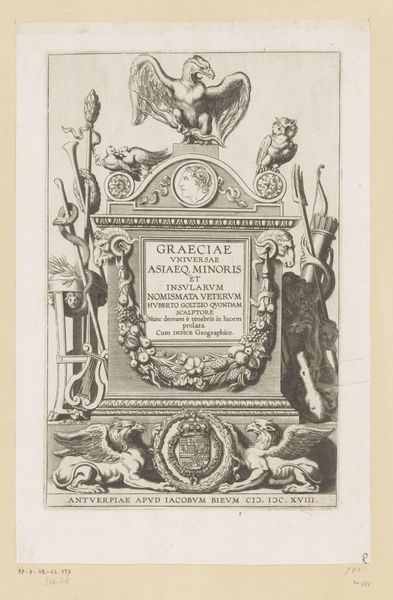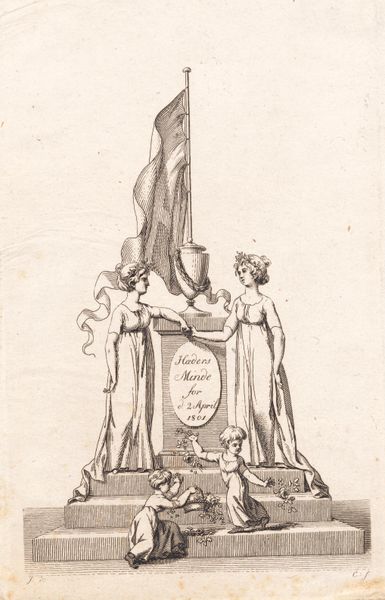
print, engraving
#
baroque
# print
#
old engraving style
#
figuration
#
engraving
Dimensions: height 179 mm, width 133 mm
Copyright: Rijks Museum: Open Domain
Curator: This print, an engraving created sometime between 1735 and 1745 by Jan Caspar Philips, features the coat of arms of Johannes Scipio Ormea. The artwork comes to us from the Rijksmuseum collection. Editor: It’s surprisingly ornate for a print, wouldn't you agree? The lines are so delicately etched, it almost shimmers, and that central coat of arms, how would you describe its significance? Curator: Heraldry was incredibly important in the 18th century. Displaying one's coat of arms reinforced social standing. Ormea was clearly a person of some stature to warrant a commission like this. You see the text draped below it, explicitly listing his titles and affiliations—canon in the chapter of St. Mary, councilor of the Court of Utrecht. Editor: True, it does highlight that connection between lineage and position within a societal structure, yet also it is clearly symbolic—a seated figure with sword, a warrior figure holding a spear, that central shining light above what seems to be books—it’s such an elegant combination of power and faith. Curator: That intersection was, of course, crucial. The placement of female figures of Justice and Fortitude, supporting the emblem of divine authority, reinforces the ideal of righteous governance. The iconography clearly communicates specific values associated with Ormea’s social role and family legacy. The choice of print allowed this declaration to be widely distributed. Editor: It strikes me how expertly the engraver handles light and shadow. It creates an amazing three-dimensional effect from a purely two-dimensional art form. That soft glow surrounding the shield almost seems like an aura. Curator: The print medium itself speaks to the democratization of imagery and the role it played in projecting power during this era, wouldn’t you say? These prints were important means of public communication. Editor: Seeing how these elements coalesce—the societal context, and the elegant artistry—really gives insight into the meaning beyond mere heraldry. Curator: Absolutely. Looking beyond aesthetic considerations alone brings awareness to how such artwork reinforced established power and the elite's claim on authority within Dutch society.
Comments
No comments
Be the first to comment and join the conversation on the ultimate creative platform.
